reading
It is no exaggeration to say that we LOVE books and reading at RAB. Our classes are named after authors, we have an extensive and inspirational library for weekly visits, a Reading Garden, Reading Buddies, Fun Reading Friday, author visits, school-wide reading challenges and we fully embrace World Book Day. We're not sure who enjoys dressing up more, the staff or the children!
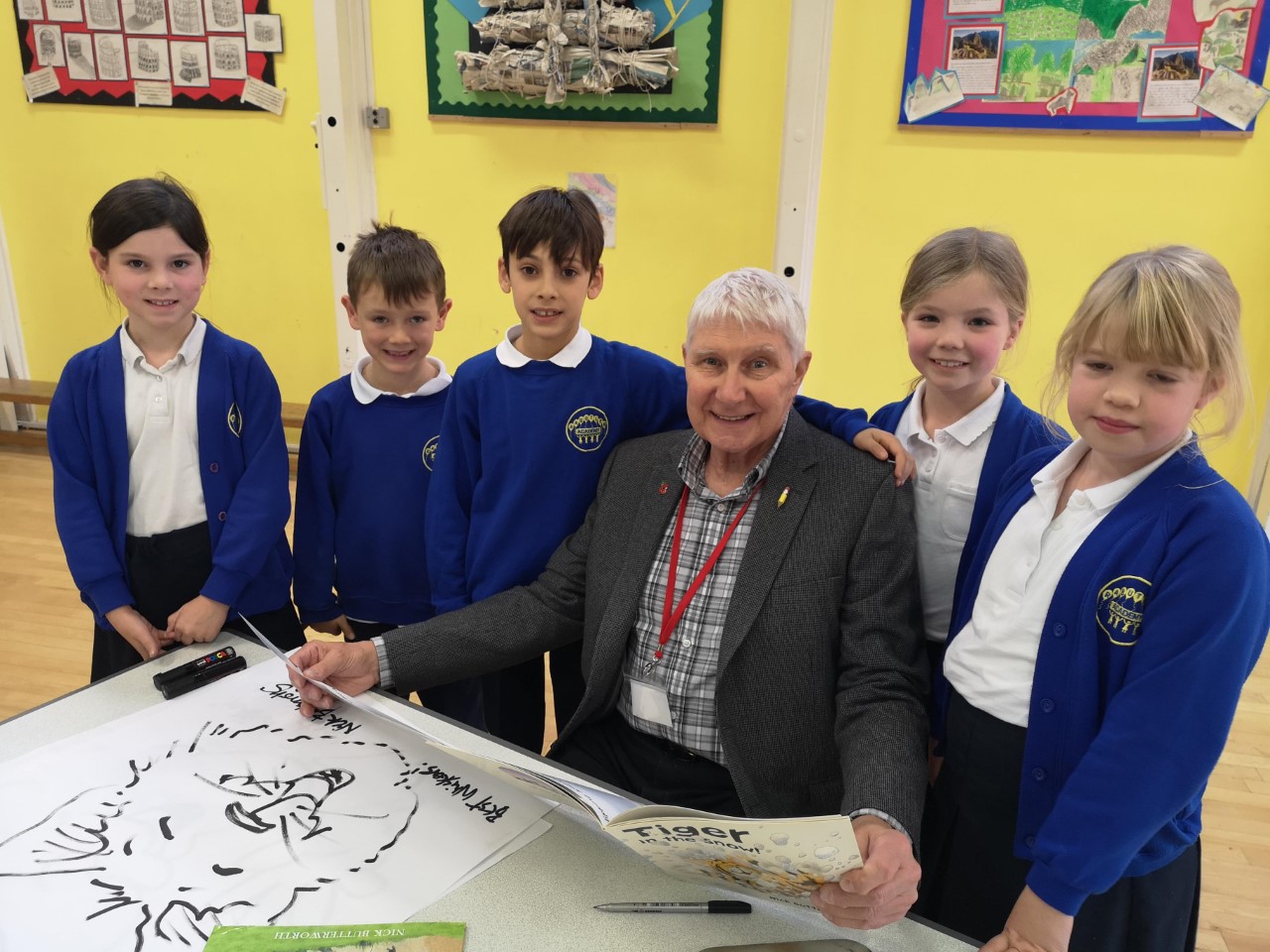
Every child at RAB learns how to read with fluency and understanding and hears high quality text read aloud, including classic literature on a daily basis.
Reading extends children’s knowledge, widens their vocabulary and develops their ideas.
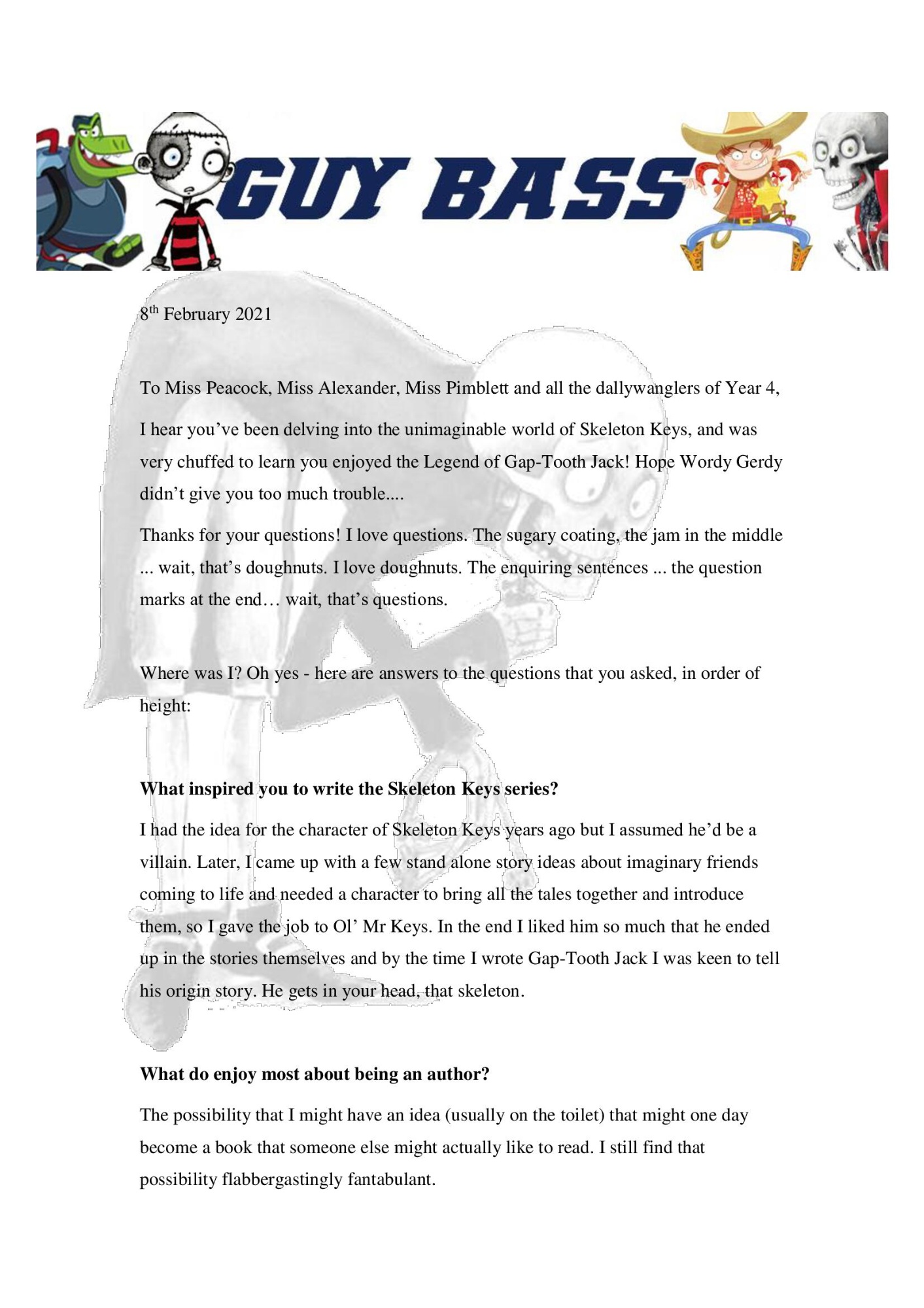
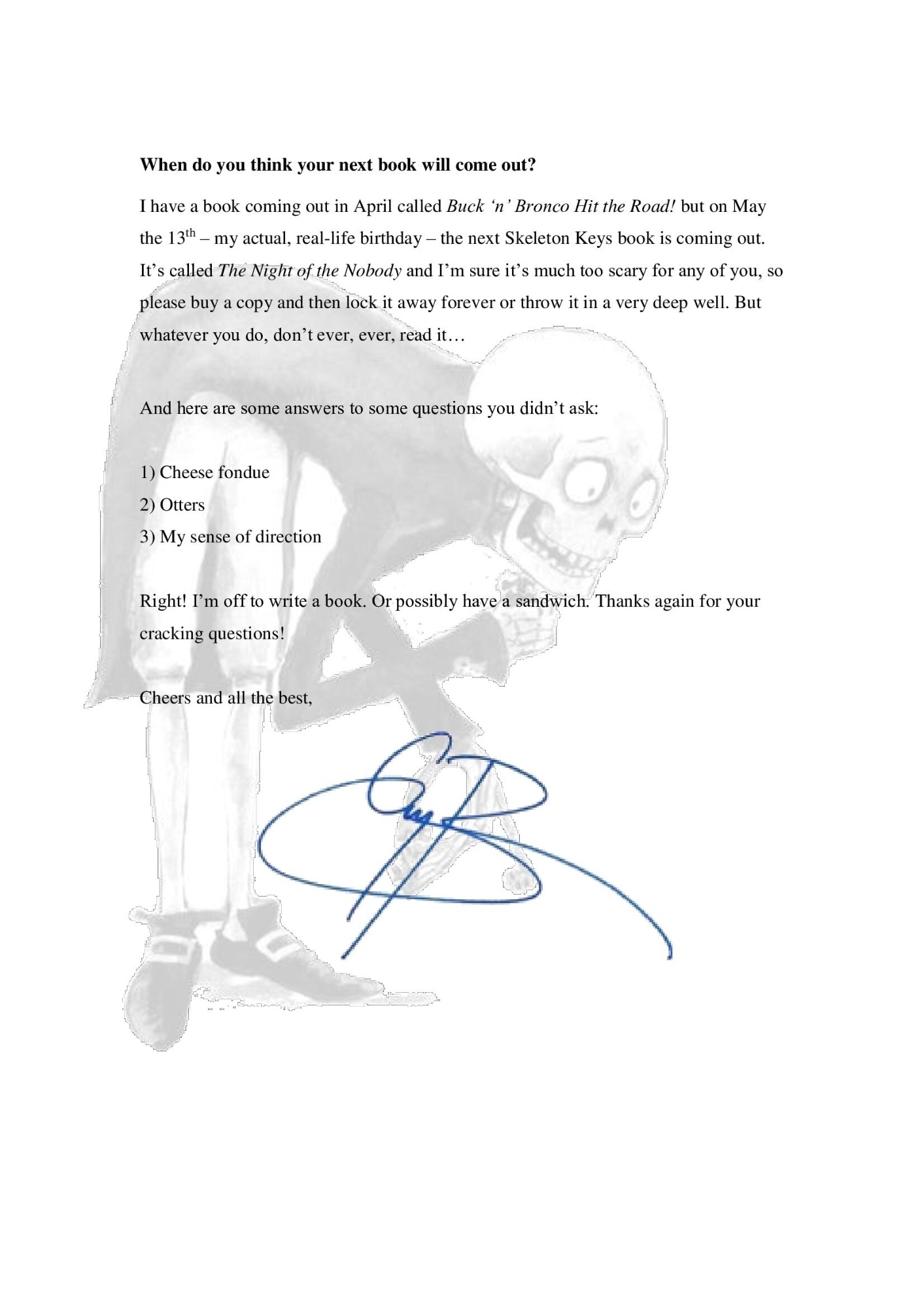
A letter from the fantabulous Guy Bass author of Skeleton Keys
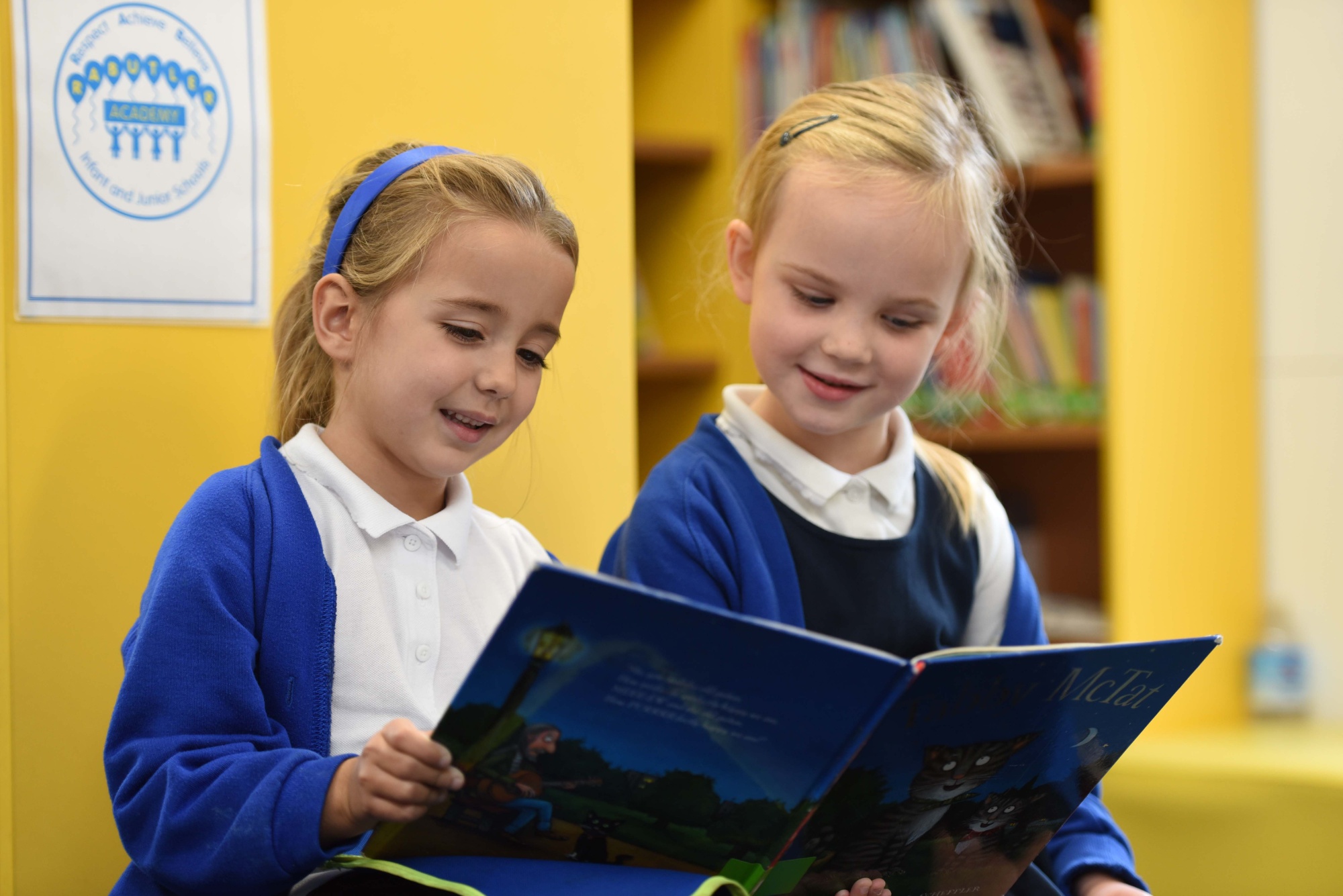
Our curriculum encourages and supports children to read widely and often, both for information and pleasure. Research shows that ‘reading for pleasure can promote better health and well-being’ and ‘is a more powerful factor in life achievement than socio-economic background.’ (The Reading Agency) Indeed, through reading, children develop culturally, emotionally, intellectually, socially and spiritually.
We understand all children develop at different rates and in different ways. Therefore, we teach reading in a variety of ways, predominately through phonics but also through developing sight vocabulary and looking at the shape of words. We use Phonics the RAB Way which is our own systematic synthetics programme, we follow this with fidelity and believe it provides an effective systematic phonics progression. Our teaching of phonics is focussed on empowering children as young readers and writers and thus phonics teaching and learning should be a highly positive and successful process for all. To achieve this, we ensure lessons are engaging, purposeful and interactive.
We use a range of reading schemes within Key Stage 1 including: Phonics Bug, Collins Big Cat, Dandelion launchers and Project X. When the children are just beginning to read, they may bring home books without words until they are successfully blending sounds together. In these early stages, the books are grouped in numbered boxes. This is to ensure teachers can closely match the book to the phonic needs of the child and to the sounds they are learning in class. It is not necessarily the case that children move through the boxes numerically as it will depend on their individual phonic acquisition. When the children are working within Phase 3 and through to Phase 5 they
will move to reading books with a tight focus on the sounds they are learning that week or from the week prior. They will read these books at home and at school.
Once the child is reading proficiently, they will move away from the numbered boxes and move to a wider range of reading materials. All of these books are colour banded for progression purposes. These boxes again contain a variety of different reading schemes with a mixture of fiction and non-fiction materials.
Children are also actively encouraged to borrow picture books from their class libraries as well as visiting the school library once a week to borrow a book of their choice.
We understand the importance of regular reading practise at home and work with parents to encourage them to read at home every night.
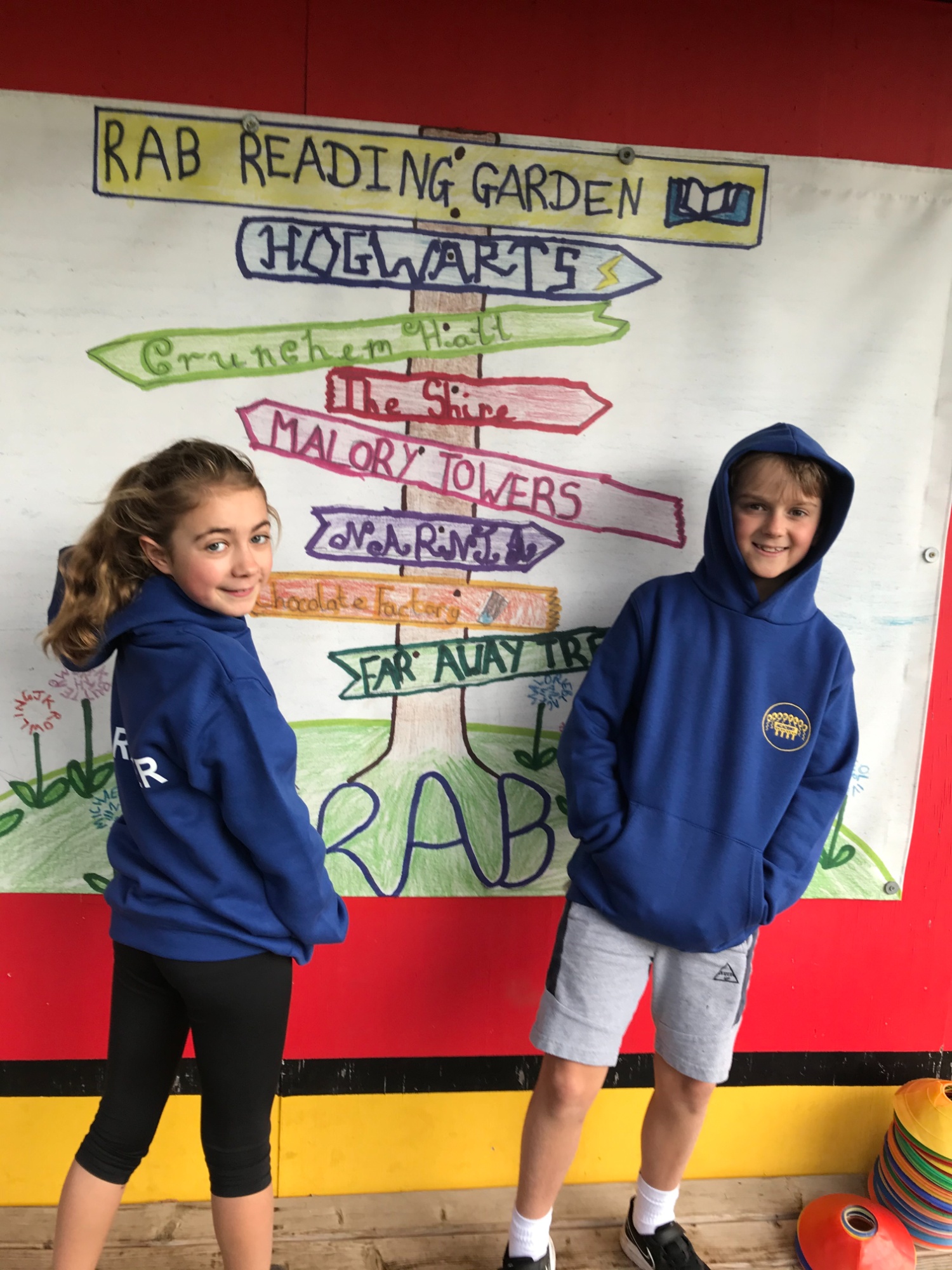
Guided Reading
We understand that reading is about much more than simply decoding words on a page and believe that children need to engage in active discussion where they co-construct meaning from a text in order to develop the comprehension skills they need to effectively engage with and understand a text. We teach these skills through high quality, regular and carefully planned shared and guided reading experiences.
In EYFS this will initially be individually before moving into pairs or small group sessions. In Year 1 at the start of the Autumn term this will once again be mostly individually before changing to whole class guided reading once the children are able to access phase 5 phonics. (N.B Some children will not take part in WCGR and instead will be part of a smaller guided group session.) The structure of these reading sessions across the week will vary, based directly on the needs of the children. At least 3 days per week will have a phonic focus and will be tightly linked to the new sounds the children are learning. The other two days will look at text extracts from a range of age appropriate texts and will be designed to develop children’s fluency and prosody. In Year 2 whole class guided reading will initially have a phonic focus in the first half of the Autumn term before moving to an extract based structure ensuring the children meet a wide variety of text types across the year. The children in the Infant school will be supported to read a book up to three times in school and at home, each time with a slightly different focus.
Reading whether it be individual, group or whole class will focus on the acquisition of vocabulary and developing reading fluency, before moving on to focus on the content of the book, developing the children’s comprehension skills using carefully focussed questions.
In KS2 whole class guided reading sessions are taught four days a week. The structure is the same each week. On Day One the class novel is recapped with comprehension questions focusing on authorial intent and a PSHE question. On Day Two and Day Three a shorter linked text will be used with a focus on retrieval and inference. These texts are varied and will include fiction, non-fiction, songs and poems. They will link to a specific foundation topic for the week or a theme from the class novel. Day Four goes back to the class novel with a focus on predication and summarising. New key reading objectives will also be taught and practised during Day Two and Three. .
Additional support is given to reading with those children whose decoding or fluency is hindering their progress. This will be through 1:1 or small group interventions.
Literature and Poetry Spine
We have a separate literature (fiction) spine. We believe that to become competent, engaged, excited readers, children need to be exposed to a broad range of high-quality texts. To guarantee this, we have developed a literature spine which runs throughout the school and includes all of the texts children access through whole class teaching. These include a wide range of genres, narrative types and authors. Importantly, these texts also explore relevant and emotive subjects and themes which can be discussed as a class. Non-fiction texts are also highly valued in our school both in terms of reference for subject specific activities but also for 'reading for pleasure'. Our library is extensive with categorised sections for different subject areas, and classes also have a variety of fascinating non-fiction for children to read, In addition, a poetry spine across the school ensures that the children are exposed to a wide array of poetry both in terms of type, but also tone, purpose and style.
